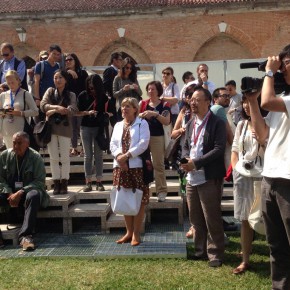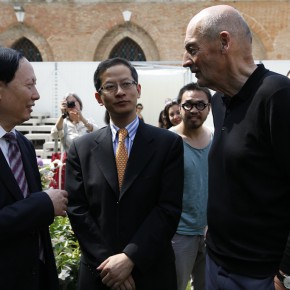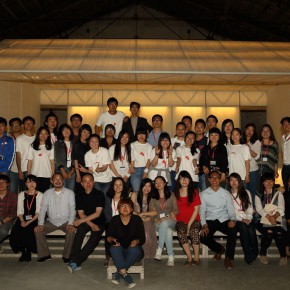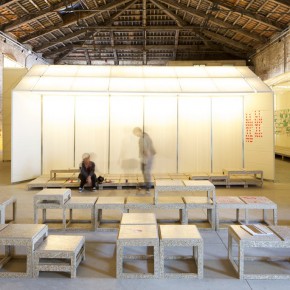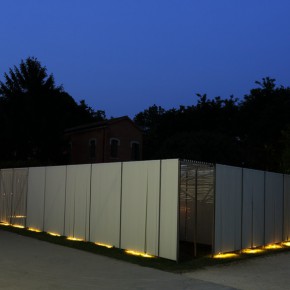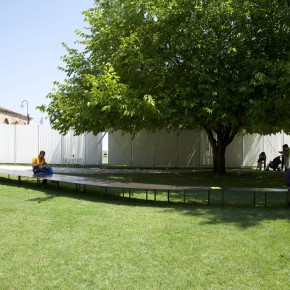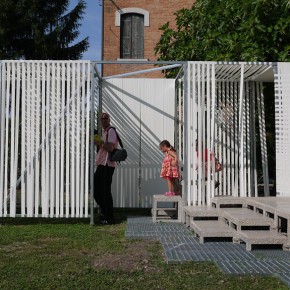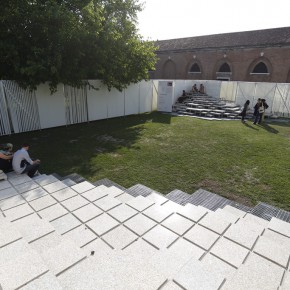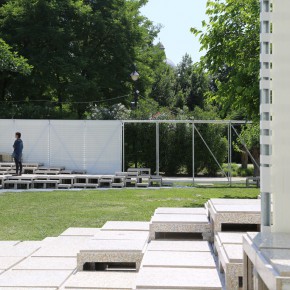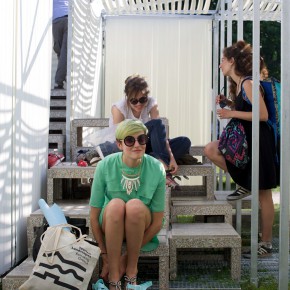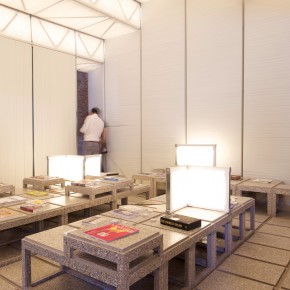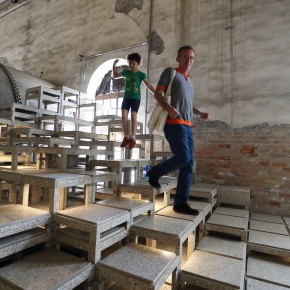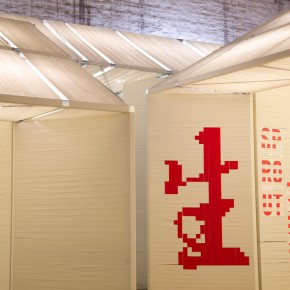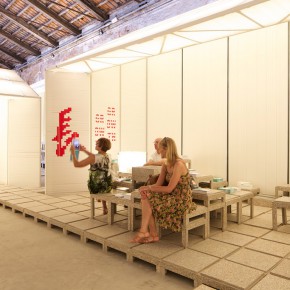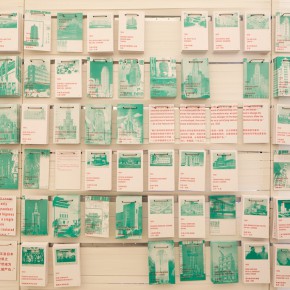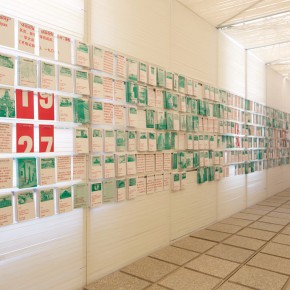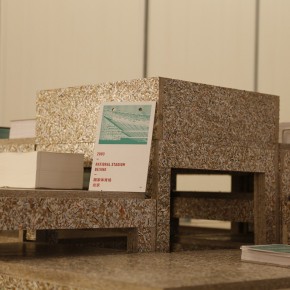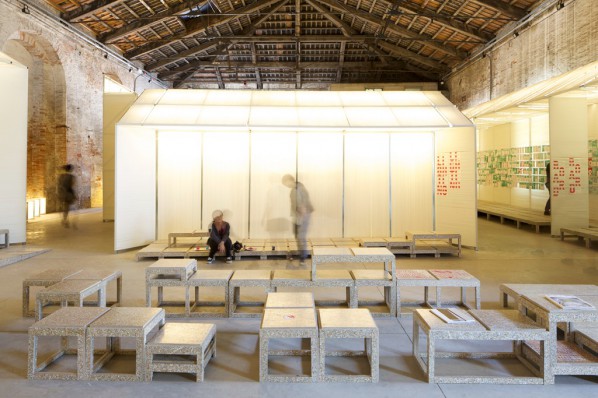
Pavilion of China – Mountains beyond Mountains of the 14th International Architecture Exhibition - La Biennale di Venezia unveiled at the Venice Armoury Virgin Garden in Italy at 15:15 on June 5, 2014. The exhibition was sponsored by the China International Exhibition Agency (China Arts and Entertainment Group). Yang Zhijin, Deputy Director of Ministry of Culture of the P. R. of China, Li Ruiyu, Ambassador of Chinese Embassy in Italy, Pu Tong, Deputy Director of the Outreach Bureau of Ministry of Culture, Zhang Jianda, Cultural Counselor of the Chinese Embassy in Italy, Zheng Hao, Commissioner of the Department of Western Europe for the Outreach Bureau of Ministry of Culture, Jiang Jun, Curator of the Pavilion of China, Huang Weiwen, Director of Shenzhen Public Art Center (Shenzhen Sculpture Academy), Lu Xiang, a partner of Duoxiang Studio, exhibitor architect of the Pavilion of China, Meng Yan, a partner of URBANUS Architecture & Design, exhibitor architect of the Pavilion of China, Li Hu, a partner of Open Architecture, exhibitor architect of the Pavilion of China, Zhang Jian, exhibitor artist of the Pavilion of China were invited to attend the opening ceremony. Paolo Baratta, Chairman of the International Architecture Exhibition - La Biennale di Venezia 2014, Rem Koolhaas, Curator of the International Architecture Exhibition - La Biennale di Venezia 2014 were present at the exhibition and spoke highly of it.
At the opening ceremony, Yang Zhijin, Deputy Director of Ministry of Culture of the P. R. of China, showed his gratitude to the Venice Municipal Government for the precious support on the work of remoulding the Chinese Pavilion. Rem Koolhaas, Curator of the Architecture Biennale put forward “Fundamentals”, this theme emphasized the historical and contemporary architecture and the international spirit and architectural diversity, especially the changes to the national construction over the past 100 years. Jiang Jun, Curator of the Pavilion of China had deepened and extended the Fundamentals on the spiritual and material levels, perfectly expounding the international aspect and diversity of contemporary architectural art, and the exhibition was helpful for the world to understand the current situation of Chinese architectural art. In addition, Yang thanked the Bi-City Biennale of Urbanism/Architecture and Excellence Group for their support of the Pavilion of China of the Venice Architecture Biennale.
Li Ruiyu, Ambassador of the Chinese Embassy in Italy said, the Pavilion of China – Mountains beyond Mountains exhibition comprehensively showed the cases of components, structures, patterns, and courtyard of 100 years' Chinese architecture, on the one hand, it highlighted that under the impact of external modernity, a variety of contradictions appeared in the process of Chinese architectural modernization, to interpret the Chinese cultural understanding of foreign culture, on the other hand, it suggested that the Chinese civilization had always been able to resolve and even assimilate the external impacts.
The curator Jiang Jun briefly introduced the theme of the Pavilion of China: “Mountains beyond Mountains”. Unlike the previous exhibition where architects displayed their own design, this time the Chinese Pavilion established a cooperative framework based on one theme: there were three teams of architects designing the exhibition space and three types of materials and structural systems were applied to build the space and these corresponding detailed architectural elements such as the base of the site, the main structure and courtyards; the elements worked together to demonstrate a mutual-reinforce-and-restrain model of Chinese philosophy in an architectural way, which echoed the theme of “Fundamentals”; in the content of the exhibition, he translated the topic “Absorbing Modernity” to “Reconcile Modernity”. Actually it was not the first time that Chinese architecture had converged with a global uniform over the past one hundred years of absorbing modernity. Architects interacted and cooperated with research teams, visual designers, and artists, which made the Pavilion of China a perfect harmonious unified structure, corresponding to Rem Koolhaas who had hoped to plan an exhibition based on “Fundamentals will be a Biennale about architecture, not architect”.
After the end of the opening ceremony, curator Jiang Jun presided over the volunteer award ceremony in the Pavilion of China. In the process of the construction of the Chinese Pavilion, nearly 100 volunteers, came from universities and colleges all over Italy, including Venice, Rome, Milan and Genoa, etc., the majority were overseas students, actively and enthusiastically participating in the construction of the venue.
The exhibition work was not the end when “Mountains beyond Mountains” themed exhibition of the Pavilion of China opens officially on September 20, UABB@Venice (Bi-City Biennale of Urbanism/Architecture@ International Architecture Exhibition - La Biennale di Venezia). The Shenzhen Hong Kong Bi-City Biennial of Urbanism/Architecture is the only biennale of the world positioned as an urbanization exhibition, while the Bi-City Biennale of Urbanism/Architecture of the last year becomes a part of the foundation for the International Architecture Exhibition - La Biennale di Venezia of the year. The cooperation between the UABB and International Architecture Exhibition - La Biennale di Venezia not only aims at cultural communication, but also looks for the differences, strengthening the personality on both sides.
In the following six months, in addition to keeping the main structure stable, the Pavilion of China will continue to launch the “Special Exhibition”, “Exhibition in Exhibition”, to continuously update the content and form of the exhibition.
Translated by Chen Peihua and edited by Sue/CAFA ART INFO
Photo by Wang Yan & Marco Cappeletti


